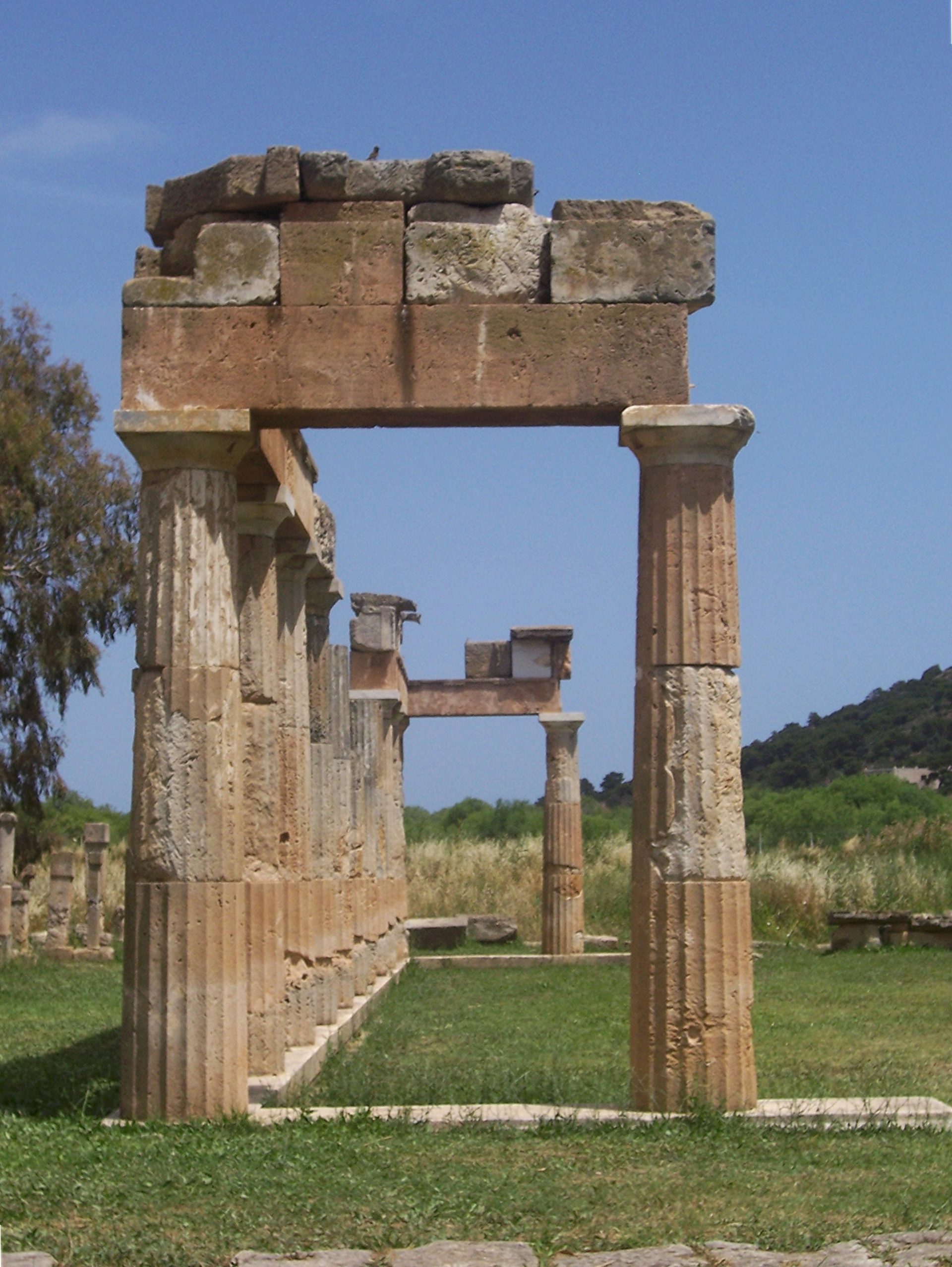Iphigenia

The Sacrifice of Iphigenia by Giovanni Battista Tiepolo (1757)
Villa Valmarana, VicenzaPublic DomainOverview
Iphigenia, daughter of Agamemnon and Clytemnestra, was a princess of Mycenae (located in the Argolid). As the Greeks were preparing for the Trojan War, the goddess Artemis demanded that Iphigenia be sacrificed to her in exchange for a wind to blow the Greek fleet to Troy. Though initially reluctant, Agamemnon finally agreed to go through with the sacrifice.
In most versions of the story, Artemis snatched the girl away just before she was killed, substituting a deer (or some other animal) to be sacrificed in her place. Iphigenia was then spirited away to the land of the Taurians on the Black Sea, where in some traditions she became a princess of Artemis or was even immortalized.
Iphigenia was worshipped in various parts of the Greek world, usually in connection with Artemis. Her best-known cult was in Brauron (located in Attica).
The myth of the sacrifice of Iphigenia has had a rich afterlife, inspiring famous adaptations by Racine, Goethe, and many others.[1]
Key Facts
Who were Iphigenia’s parents?
According to most sources, Iphigenia was the firstborn child of Agamemnon and Clytemnestra, the king and queen of Mycenae. Agamemnon led the Greeks to victory during the Trojan War, while Clytemnestra was best known for murdering Agamemnon when he returned from Troy.
However, there were other traditions regarding Iphigenia’s parentage. According to one early poet, Iphigenia was actually the child that Helen bore to Theseus after he abducted her. Once Helen had been rescued, she gave her daughter to her sister Clytemnestra to bring up.

Fragment of an Attic red-figure lekanis by the Circle of the Meidias Painter (410–400 BCE) showing Agamemnon with a scepter
National Archaeological Museum, Tarentum / JastrowPublic DomainDid Iphigenia become a goddess?
In most traditions, Iphigenia was a mortal woman, not a goddess. However, she was worshipped as a female hero (or heroine) at various sites across ancient Greece. Iphigenia’s functions appear to have involved female initiation rites and childbirth.
Probably the most important ancient cult of Iphigenia was at Brauron in Attica, where she was worshipped in connection with Artemis. There Iphigenia and Artemis were said to preside over the initiation rites of young girls. Some sources traced the origins of this cult to the myth of Iphigenia’s sacrifice.

The earliest temple of Artemis at Brauron (6th century BCE)
Carole RaddatoCC BY-SA 2.0The Sacrifice of Iphigenia
When the beautiful Helen, wife of the Spartan king Menelaus, ran off with Paris of Troy, Menelaus’ brother Agamemnon amassed a vast army to bring her back. But before the fleet could set sail, Artemis commanded Agamemnon to sacrifice his eldest daughter Iphigenia to her. Until Iphigenia was sacrificed, Artemis refused to grant the Greek army a favorable wind to blow them to Troy.
Agamemnon eventually complied with Artemis’ command. In one popular tradition, he sent for Iphigenia by telling her she was to be married to the great hero Achilles. But when Iphigenia arrived, Agamemnon had her brought to Artemis’ altar to be sacrificed.
In most versions of the myth, Artemis rescued Iphigenia before she could be killed, replacing her with a deer (or some other animal). The girl was then spirited away to a remote sanctuary of Artemis.

Sacrifice of Iphigenia by Charles de la Fosse (ca. 1678)
The Metropolitan Museum of ArtPublic Domain